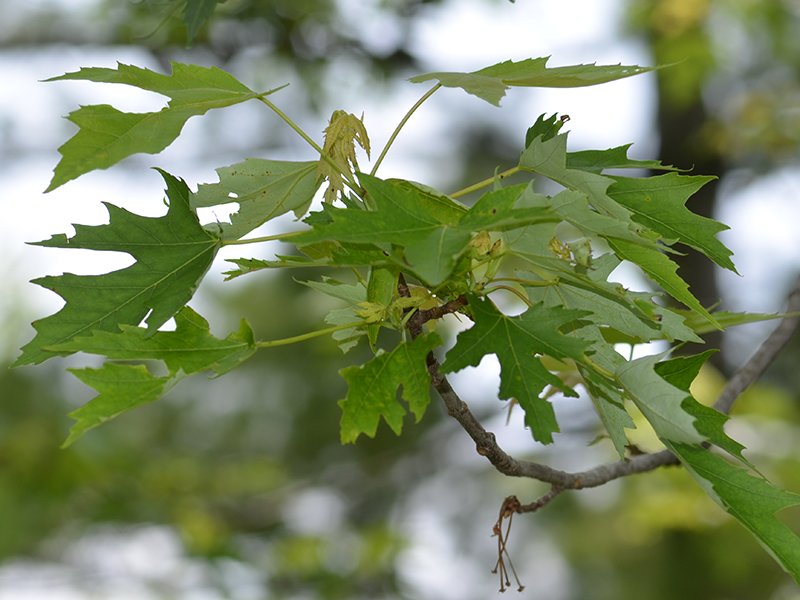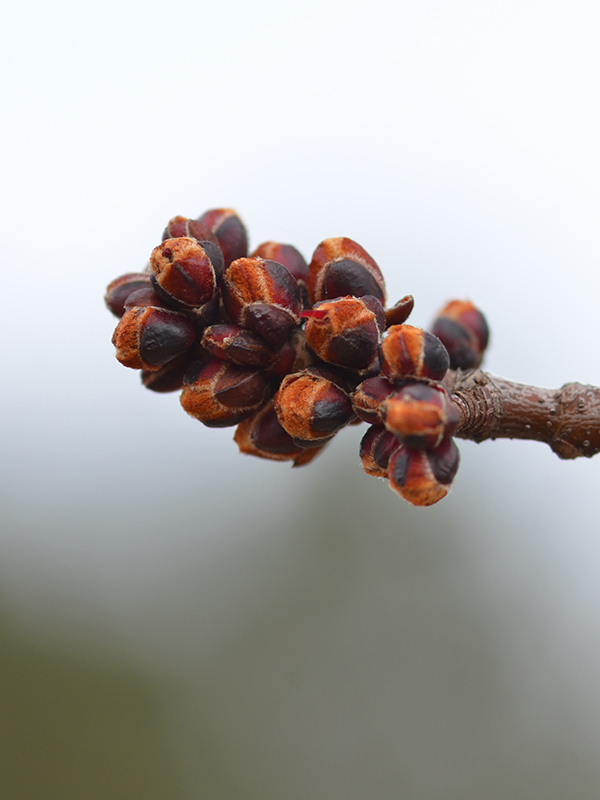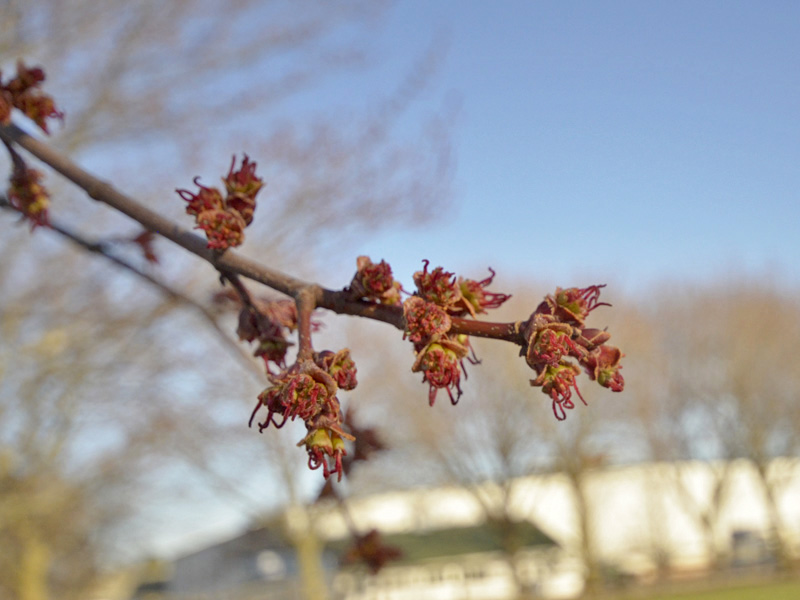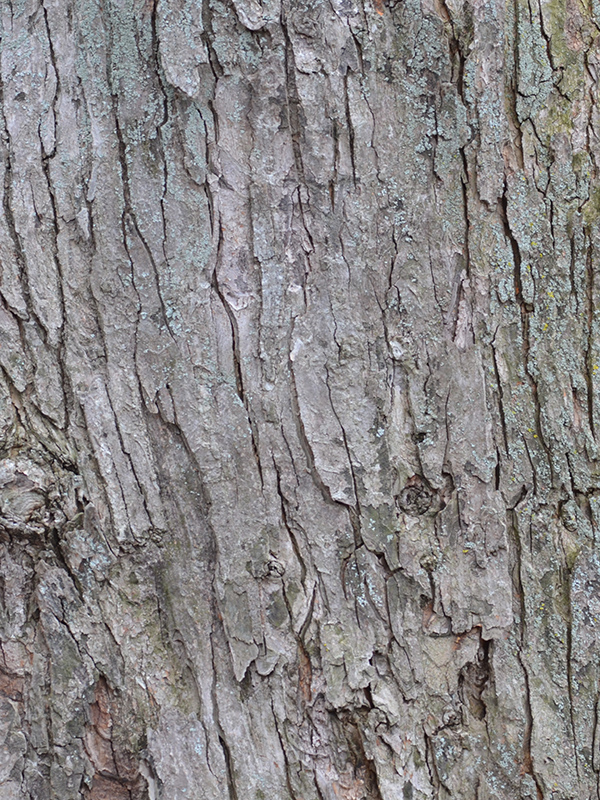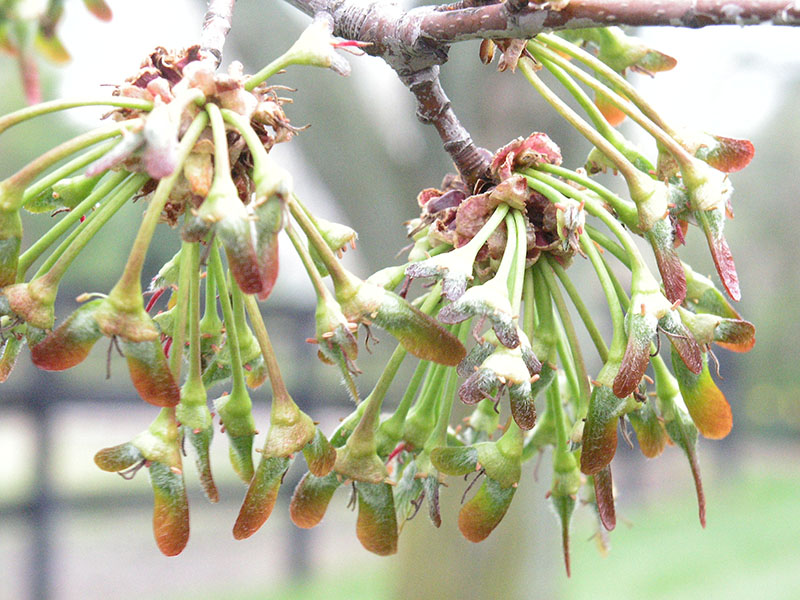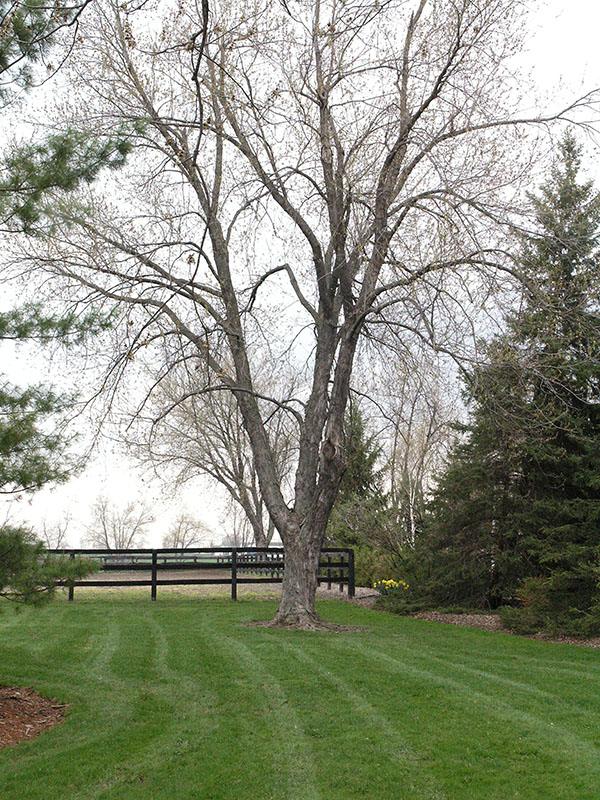
Woody > Acer > Acer saccharinum > Acer saccharinum
Acer saccharinum
Silver Maple
Origin: Canada and United States of America.
Mike's
Opinion


"
A tree that has many good points and several bad ones. Fast growing for a maple and majestic upon old age it can be a classy tree, I have one beside the house that is in decline and well over 120 years old. The negatives are it can produce a lot of seed litter and consequently seedlings. The wood is also weak, and the havoc in the Cuddy Gardens during an ice storm in 2003 almost destroyed the garden; the tree was planted as a cheap windbreak. It has been used in the past as a street tree, where unfortunately its management is often neglected and large limbs are removed. This causes unnecessary structural deterioration and the tree is destined to fail.
Michael Pascoe, NDP., ODH., CLT., MSc. (Plant Conservation)
"
| Family |
| Sapindaceae (Aceraceae) |
| Genus |
| Acer |
| Species |
| saccharinum |
| Category |
| Woody |
| Type |
| Tree (deciduous) |
| Pronunciation |
| USDA Hardiness Zone |
| 3 - 9 |
| Canadian Hardiness Zone |
| 1a |
| RHS Hardiness Zone |
| H4 - H7 |
| Temperature (°C) |
| (-40) - (-1) |
| Temperature (°F) |
| (-40) - 30 |
| Height |
| 15-25 m |
| Spread |
| 10-20 m |
Photographs
Description and Growing Information
Flowering Period
| General Description |
| Maple leaves that are deeply dissected with a silver underside, rough grey bark, and somewhat arching branches. Often a very large tree. This species has been placed on the IUCN Red List as least concern. |
| Landscape |
| Often used as a street tree as it can withstand dry soil conditions and is fast growing but roots can cause sidewalks to buckle and large branches become a liability as they can break easily. |
| Cultivation |
| Tolerant of wide variety of soils but achieves maximum size in moist soils along streams and moist soiled woods. Transplants well. Prefers slightly acid soil.If pruned, remove only small limbs to allow closure of the wounds, summer or late winter pruning is best. |
| Shape |
| Upright with spreading branches that can form an oval to rounded crown with pendulous branchlets |
| Growth |
| Fast |
| ID Characteristic |
| Maple leaves that are deeply dissected with a silver underside and which are generally three lobed. |
| Pests |
| Some maple tar spot but not a problem. |
| Habitat |
| Woodlands throughout Southern Ontario, Canada, and along edges of fields and streams. |
| Bark/Stem Description |
| Light grey and smooth when young turning dark grey and rough when old with many large flat plates. |
| Flower/Leaf Bud Description |
| Small rounded buds, held in threes below the flower buds. The flower buds are also distinct as they are towards the end of the branches and involve large rounded clusters of buds, red in colour. |
| Leaf Description |
| Leaves to 15 cm across, deeply dissected and usually with five main lobes. Opposite and silvery beneath attached with a petiole to 10 cm long. |
| Flower Description |
| Small, insignificant, greenish yellow flowers borne in April. |
| Fruit Description |
| Samara, 1.75-2.5 cm, a maple with one of the largest fruit. |
| Colour Description |
| A pale yellow mixed with green and the occasional burst of red and orange. |
| Texture Description |
| Medium to coarse textured tree. |
| Notable Specimens |
| Throughout Southern Ontario, Canada. The A.M. Cuddy Gardens, Strathroy, Ontario, Canada. |
| Propagation |
| Seed has no dormancy and germinates immediately after maturing, softwood cuttings root easily. |
